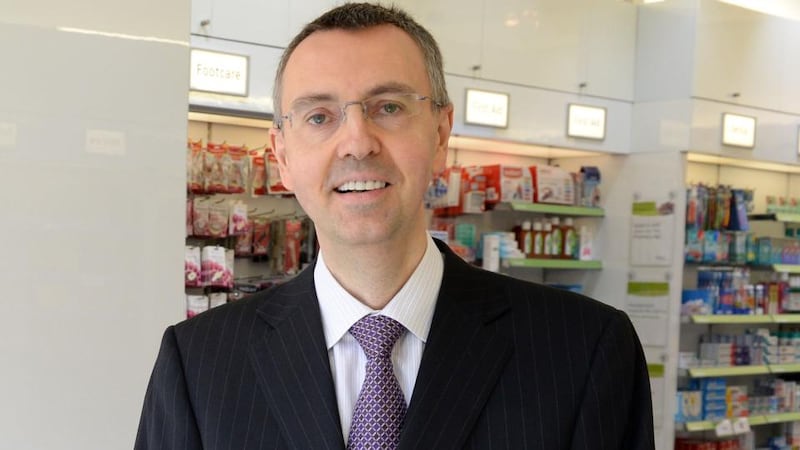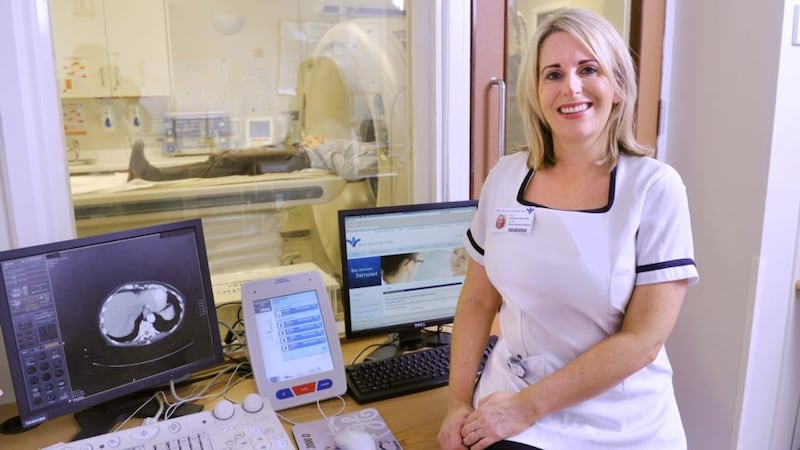Karen Brennan, Advanced nurse practitioner
Karen Brennan says the impetus for more senior roles for nurses dates back about 50 years when nurses were identified as experienced and highly trained caregivers who could have more responsibility in emergency departments.
“The majority of cases in emergency departments are medical and surgical patients who can be treated by an advanced nurse practitioner.


“This [realisation] led to more training for nurses which then gave nurses more authority to deal with patients directly,” explains Brennan, who works as an advanced nurse practitioner at South Tipperary General Hospital in Clonmel.
In 2001, there was one advanced nurse practitioner in Ireland. She worked in an emergency department. This year, there are 150 advanced nurse practitioners working in more than 30 different specialist areas in Ireland. These include diabetes, oncology, sexual health, paediatrics, respiratory, emergency and cardiovascular medicine.
“Nurses still want to have patient contact and to make a difference in clinical settings, which is why these specialisms have developed,” says Brennan, who is the chairwoman of the Advanced Nurse and Midwife Practitioners Association.
To gain the title of Advanced Nurse Practitioner, nurses have to have a master’s degree, be qualified for seven years (with five years in their chosen specialism) and complete six months’ clinical training in their specialism.
Once qualified, advanced nurse practitioners have the authority to diagnose, treat and discharge patients in their specialist area.
“For example, in an emergency department, I can manage an amputated limb, a fractured shoulder, soft tissue infections or a head injury without loss of consciousness,” explains Brennan. She also can independently prescribe medicines and X-rays in the emergency department. An advanced nurse practitioner is often given responsibility for minor injury management in an emergency department, according to Brennan.
“Of the eight years I have been practising as an advanced nurse practitioner, I have never had a patient ask to see a doctor instead,” she says. “People see that you are confident, competent and able to make a judgment. Nurses connect with people and, in general, the public trust nurses.”
She says that her professional colleagues have also embraced the changed role of advanced nurse practitioner. “The consultant is in charge of the department, so there always has to be professional courtesy.
“But, in the past, nurses were often surreptitiously prescribing drugs by telling the interns what to prescribe. Now, we’re clearer about articulating our expertise.
“The level of care that I provide has to be equal to that of a registrar. I take on the mantle of responsibility and all the component aspects of care. It’s a fabulous opportunity which gives me a great sense of achievement and job satisfaction.”
Karl Hilton, Pharmacist
Pharmacists working in pharmacies across the country have undergone huge changes in their role in the past five years or so. One of the most significant of these is their right to prescribe a range of medicines that previously only GPs were allowed to prescribe.
The new consultation areas in many pharmacies are evidence of this new role. Often, pharmacists will invite clients into these cubicles to discuss a condition and advise on the appropriate treatment.
“The pharmacist’s role of picking, licking and sticking a label on to medicines for clients has changed. We have a lot more direct contact and clinical interaction with patients,” says Karl Hilton, who owns and works in pharmacies in Dublin and Wicklow.
The safe dispensing of prescriptions is still central to the pharmacist’s job but even this has changed. “We now have a role in using cost-effective medicines, explaining generic substitution to patients [when a branded medicine is replaced by another cheaper medicine that has the same chemical composition], reviewing patients’ medicines and checking that there are no interactions between drugs, and no duplications or overdoses,” says Hilton.
Finding ways to encourage patients to complete their prescriptions and take their medicines at the correct time is also part of a pharmacist’s job.
“I think we could have a wider role in medicine management, which would save the State money and help reduce waste. Every day, patients bring in [old or unfinished] boxes of medicines that can’t be dispensed,” says Hilton.
Recent developments in pharmacy apps to reorder prescriptions and medicine containers with times and days printed on them have helped some patients take their medicines at the correct times and finish a course.
Giving flu vaccinations to clients and dispensing emergency hormonal contraception without a letter from a GP are other huge changes for both patients and pharmacists.
Hilton says: “The Irish contraception and crisis pregnancy study (2010) found that 44 per cent of all pregnancies in 18- to 25-year-olds were crisis pregnancies. In many of these cases, women won’t go to their GPs because of embarrassment or their doctors are not available. It has long been recognised that dispensing emergency hormonal contraception is something pharmacists should be doing.”
In terms of giving vaccines, Hilton says that one in 10 vaccines for influenza is now administered by pharmacists. “Ten minutes in a pharmacy can save 10 days of flu symptoms,” says Hilton. He would also like to see pharmacists become involved in childhood vaccinations.
Meanwhile, there is a range of medicines that have come off prescription and are now available over the counter in pharmacies. These include anti-fungal and anti-viral medicines.
“We’d like to see more medicines included in this,” says Hilton, who was the president of the Irish Pharmacy Union from 2004 to 2006.
Hilton says pharmacists are the frontline of medicine, dealing with allergies, eye and ear infections, travel sickness, skin rashes and lots more.
“We see everything from minor ailments to conditions that require emergency care. We have always been the original triage of the health service because we have to make a judgment call on whether a patient needs a GP, a hospital, a medicine or nothing at all,” says Hilton, who believes pharmacists could take even more pressure off GPs during the roll-out of universal healthcare.
Geraldine McAuliffe, Clinical specialist radiographer at the Bon Secours Hospital in Cork
Radiographers now have a much more collaborative role in the diagnosis of conditions in hospital settings. Previously, the radiographer did the X-ray, ultrasound, CT or MRI scan, and sent the report to the medical specialist who used it to help in the diagnosis of the patient’s condition. Now, in many cases, the radiographer works alongside the consultant to diagnose conditions.
Geraldine McAuliffe is a clinical specialist in ultrasound, or ultrasonographer, in the Bon Secours Hospital in Cork city. After she qualified as a radiographer she did further studies in healthcare management and ultrasound, which is now a specialist area alongside CT and MRI scanning. She works closely with radiologists [hospital-based doctors who specialise in radiology].
She says that development in scanning technology has improved the accuracy of diagnosis of conditions ranging from deep vein thrombosis to liver lesions and gynaecological issues.
Other changes in technology mean that radiographers no longer develop their own X-ray film. Instead, they rely on digital images , which are often not printed out at all but viewed on screens by a multidisciplinary team. “This means that scans are easily transported and readily available. They can be emailed abroad and CDs of scans can be given to patients who are going on to see another consultant,” she says.
The radiographer continues to have the principal responsibility for gaining the most accurate information possible of the internal organs or skeletal structure of the patient. This requires good communication skills with patients who might be anxious about having a scan. It also requires expert knowledge of the workings of the scanning equipment.
Radiographers’ role in CT and MRI scanning has developed significantly in recent years. “For example, we now give injections of X-ray dye, which highlights organs, making diagnosis a lot easier,” says McAuliffe
“The development of CT calcium scoring also means that we can check the coronary arteries for high cholesterol levels within five minutes. Then, we know if a patient needs to go on to have an angiogram [a more specialised X-ray where special dye and a camera are used to take pictures of the bloodflow through the arteries].”
McAuliffe says that no one test can result in a full diagnosis of a condition. The results of various scans are combined with the patient’s clinical history and symptoms before a full decision can be taken.
Ultrasound and CT scans are now also used during procedures which avoid the patient undergoing surgery for certain conditions. So, for example, an abdominal abscess can be drained using ultrasound scan under local anaesthetic to avoid the patient having an operation.
The normal method of obtaining biopsies is now CT or ultrasound-guided whereas previously these patients would have had operations, she adds.










